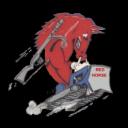Yahoo Answers is shutting down on May 4th, 2021 (Eastern Time) and beginning April 20th, 2021 (Eastern Time) the Yahoo Answers website will be in read-only mode. There will be no changes to other Yahoo properties or services, or your Yahoo account. You can find more information about the Yahoo Answers shutdown and how to download your data on this help page.
Trending News
Good description and diagram of Accuracy vs Precision?
Let's face it, my book's description of Accuracy vs Precision is dry and vague.
Someone please explain clearly and provide a link to a diagram. I choose best answer as soon as it is available.
Thanks
2 Answers
- Scott HLv 61 decade agoFavorite Answer
You can shoot some number of arrows (call the number N) at a target. If all N are in the bullseye, then you're both accurate and precise. If they're within a small circle high and left of the bullseye, you're precise but not accurate. If you're within a large circle centered on the bullseye, you're accurate but not precise.
Source(s): "Rhetoric for Engineers", Ron Graham http://thenewstartmeup.files.wordpress.com/2009/03... - Anonymous5 years ago
The accuracy or the error in a measurement is the actual value of a parameter minus the measured value. Precision relates to how repeatable is the measurement. A measurement can be accurate and precise, one and not the other and neither. Take you example of measuring a car - lets say the car's actual length is 6.235 m or 6235 mm. If we measure the car to the nearest m and we do it five times. Since this is a fairly gross measurement we would probably get the same value each of the five times. Thus the measurement is very repeatable and therefore precise. However, its accuracy is about 1/4 m. If we measure the car to the nearest mm and we do it five times, we will probable get five different values. All ranging near the actual value. This time the measurements are far more accurate (with an error probably less than 25 mm vs 235 mm for the other) but its precision is less since we will have a spread of values.


